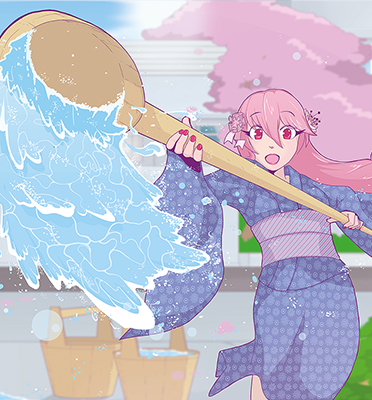Green roofs are hot! Roofs completely covered in plants are becoming a familiar sight in our cities. After all, what’s not to like? They offer a home to birds and insects, and because the plants hold on to moisture they cool down the city in summer. And, as an added bonus, it’s clear for everyone to see you’re doing your bit for the environment. Except that Anna Solcerova’s PhD research project (Department of Water Management) shows that these roofs are having quite a different effect.
Anna’s research, which formed part of a Climate-KIC project, focused on how water retention influences the temperature of the immediate environment. She studied ponds, trees and green roofs in order to gain a better understanding of how the water contained there could cool down a city baking in summer heat.
She embarked on several fieldwork trips, albeit reluctantly at first. ‘All sorts of things can go wrong when you’re working out in the open. There’s all that expensive measuring gear and you’re standing in a pond trying not to get it wet. It’s a nightmare!’ But now that she’s back at her desk she is looking back on the field trips with affection. ‘Trying to keep everything working is like solving a puzzle over and over. It made me feel like a child again.’
Her research also took her to Utrecht where, to gauge the effect of the green roof on the temperature of the immediate environment, she compared a green roof that had withered through neglect with a thriving green roof in full bloom. It turned out that far from lowering the peak summer time temperature of the environment, the green roof boosted the temperature! Based on this research the cooling effect of the green roof could not be proven.
But as far as Anna is concerned this does not mean that green roofs have no use. Despite the fact that she did not find proof for a cooling effect during a warm summer’s day, she did find that the green roof does a better job of cooling down the temperature at the night than a ‘bare’ roof. A good night’s sleep in summer is a result as well, and, what is more, a green roof is much nicer to look at than a block of concrete. Another application of the green roof is its use as insulation against heat, Anna found. In hot countries with buildings without roof insulation green roofs could make all the difference.
So green roofs are by no means a lost cause and Anna has been taking inspiration from examples from Singapore to further explore their potential. Singapore, she found, has a legal requirement that any greenery removed from a site to make room for a new building has to be replaced. The law does not stipulate what shape the replacement greenery should take: green walls, green balconies and roof gardens are just some of the options. According to Anna, instead of becoming less green cities will become greener in future.
And what about Anna’s own future? After her promotion she is off on a long holiday and then she hopes to find a job in which she can keep working to make the city a place where people, water and greenery all have their place.



